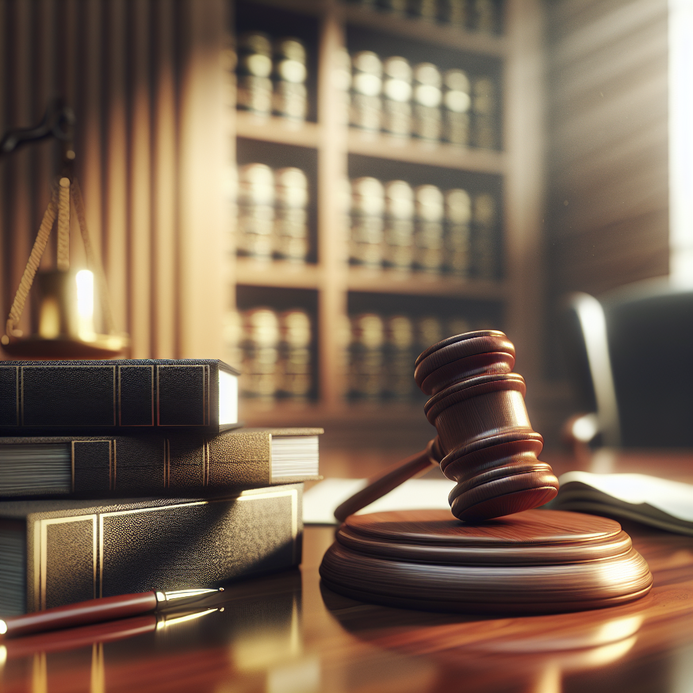Properly navigating a motion to lift the automatic stay requires understanding its purpose, filing requirements, and potential outcomes for creditors and debtors. This guide explains the automatic stay in bankruptcy, reasons creditors seek relief, steps for filing or responding, and consequences of the court’s decision. Whether you are involved in Chapter 7 or Chapter 13 cases, LegalExperts.AI offers the legal clarity and resources you need to effectively handle this crucial aspect of bankruptcy law.
What is the Automatic Stay?
The automatic stay is a crucial legal protection in bankruptcy that halts collection activities. Understanding this concept is foundational to addressing motions for relief.
What does the automatic stay do in bankruptcy?
The automatic stay pauses creditor actions like wage garnishments, foreclosures, and repossessions when a bankruptcy petition is filed.
Who benefits from the automatic stay?
The stay protects debtors from collection actions and ensures fair distribution of assets in the bankruptcy process.
Are there exceptions to the automatic stay?
Certain proceedings, like criminal cases and some tax obligations, may not be halted by the stay under bankruptcy laws.
Why Would a Creditor File a Motion for Relief from Stay?
Creditors file motions to lift the automatic stay when they claim unfair impairment of their rights during bankruptcy.
What is a motion for relief from the automatic stay?
This is a formal request filed in bankruptcy court by a creditor seeking permission to continue collections or enforce claims against collateral.
Why might creditors request relief?
Secured creditors, such as mortgage lenders or vehicle loan providers, often argue that the value of their collateral is declining or payments are insufficient.
When is relief most commonly requested?
Common contexts for filing include mortgage foreclosure, eviction actions, or repossession of secured assets.
Filing a Motion to Lift the Automatic Stay
Creditors filing a motion must adhere to strict legal procedures to ensure their request is heard and successful.
What must the motion include?
The motion should outline the creditor’s interest, the reasons for seeking relief, and relevant supporting documentation.
How is a motion for relief filed in bankruptcy court?
The creditor must use specific forms, serve notice to all involved parties, and pay the applicable court filing fees.
What is the significance of notice and a hearing?
Courts require formal notice to creditors, debtors, and their attorneys, and a hearing typically follows to address both parties’ arguments.
-
Required Motion Allegations:
-
Identification of the creditor and collateral at issue.
-
Facts establishing cause for relief (e.g., lack of adequate protection for secured assets).
-
Statement of compliance with procedural rules.
-
Supporting Documentation:
-
Mortgage or loan agreements.
-
Evidence of default or declining collateral value.
Responding to a Motion for Relief from the Automatic Stay
Debtors must act promptly to protect their interests when a motion is filed.
How does a debtor respond to a motion?
A debtor may file a written objection, presenting evidence or arguments disputing the creditor’s claims.
Can a debtor oppose the motion?
Debtors can contest motions if the creditor’s reasoning is weak, the collateral is necessary for reorganization, or procedural errors exist.
What happens if a response is not filed?
Failure to respond may lead to the motion being granted by default, allowing the creditor to proceed with collection efforts.
-
Tips for Debtors Opposing a Motion:
-
Review the creditor’s evidence for irregularities or weaknesses.
-
Emphasize the impact on reorganization or financial recovery.
-
Common Mistakes Creditors Make:
-
Failing to provide complete documentation.
-
Filing motions without substantiating claims of hardship or asset decline.
Outcomes and Consequences of the Motion
The court’s decision can significantly impact both creditors’ and debtors’ rights during bankruptcy.
What happens if the court grants the motion?
The creditor is allowed to resume collection efforts, such as foreclosure or eviction, on the specified collateral.
What happens if the motion is denied?
The automatic stay remains intact, and the creditor cannot proceed with debt enforcement actions.
How does relief from stay affect the bankruptcy case?
Granting relief may deprive a debtor of necessary assets or complicate financial reorganization plans under Chapter 13.
What are debtor’s options after relief is granted?
Debtors may negotiate directly with creditors, pursue appeals, or modify their bankruptcy plan to address new challenges.
Additional Resources and Legal Guidance
For both debtors and creditors, understanding motions for relief requires professional support and clear resources.
What forms or tools can help creditors and debtors?
Court-specific motion templates and tools like PACER (Public Access to Court Electronic Records) simplify access to filings and case updates.
Do you need an attorney for motion-related matters?
Although self-representation is possible, consulting an experienced bankruptcy attorney can streamline the process and reduce risks.
Where can you learn more about bankruptcy motions?
Platforms like LegalExperts.AI offer comprehensive guides, templates, and legal connections to navigate bankruptcy filings and hearings effectively.
Granting relief allows creditors to pursue their claims, whereas denial preserves debtors’ protections under the automatic stay. Both sides must comply with strict legal standards through careful documentation of evidence. LegalExperts.AI provides reliable solutions.



